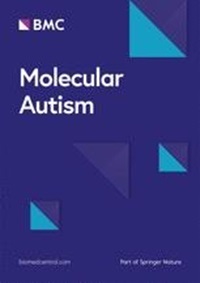Additive interaction between birth asphyxia and febrile seizures on autism spectrum disorder: a population-based study
IF 5.5
1区 医学
Q1 GENETICS & HEREDITY
引用次数: 0
Abstract
Autism Spectrum Disorder (ASD) is a pervasive neurodevelopmental disorder that can significantly impact an individual’s ability to socially integrate and adapt. It’s crucial to identify key factors associated with ASD. Recent studies link both birth asphyxia (BA) and febrile seizures (FS) separately to higher ASD prevalence. However, investigations into the interplay of BA and FS and its relationship with ASD are yet to be conducted. The present study mainly focuses on exploring the interactive effect between BA and FS in the context of ASD. Utilizing a multi-stage stratified cluster sampling, we initially recruited 84,934 Shanghai children aged 3–12 years old from June 2014 to June 2015, ultimately including 74,251 post-exclusion criteria. A logistic regression model was conducted to estimate the interaction effect after controlling for pertinent covariates. The attributable proportion (AP), the relative excess risk due to interaction (RERI), the synergy index (SI), and multiplicative-scale interaction were computed to determine the interaction effect. Among a total of 74,251 children, 192 (0.26%) were diagnosed with ASD. The adjusted odds ratio for ASD in children with BA alone was 3.82 (95% confidence interval [CI] 2.42–6.02), for FS alone 3.06 (95%CI 1.48–6.31), and for comorbid BA and FS 21.18 (95%CI 9.10–49.30), versus children without BA or FS. The additive interaction between BA and FS showed statistical significance (P < 0.001), whereas the multiplicative interaction was statistically insignificant (P > 0.05). This study can only demonstrate the relationship between the interaction of BA and FS with ASD but cannot prove causation. Animal brain experimentation is necessary to unravel its neural mechanisms. A larger sample size, ongoing monitoring, and detailed FS classification are needed for confirming BA-FS interaction in ASD. In this extensive cross-sectional study, both BA and FS were significantly linked to ASD. The coexistence of these factors was associated with an additive increase in ASD prevalence, surpassing the cumulative risk of each individual factor.出生时窒息和发热性癫痫对自闭症谱系障碍的叠加相互作用:一项基于人群的研究
自闭症谱系障碍(ASD)是一种普遍存在的神经发育障碍,会严重影响个人融入社会和适应社会的能力。识别与 ASD 相关的关键因素至关重要。最近的研究分别将出生窒息(BA)和发热性癫痫发作(FS)与较高的 ASD 患病率联系起来。然而,有关 BA 和 FS 的相互作用及其与 ASD 的关系的研究尚未开展。本研究主要探讨在 ASD 的背景下 BA 和 FS 之间的交互作用。通过多阶段分层整群抽样,我们在2014年6月至2015年6月期间初步招募了84934名3-12岁的上海儿童,最终纳入了74251名排除标准后的儿童。在控制了相关协变量后,我们采用逻辑回归模型估算了交互效应。计算了可归因比例(AP)、交互作用导致的相对超额风险(RERI)、协同指数(SI)和乘法规模交互作用,以确定交互作用效应。在总共 74,251 名儿童中,有 192 人(0.26%)被诊断为 ASD。与没有 BA 或 FS 的儿童相比,仅有 BA 的儿童患 ASD 的调整后几率比为 3.82(95% 置信区间 [CI] 2.42-6.02),仅有 FS 的儿童患 ASD 的调整后几率比为 3.06(95% 置信区间 [CI] 1.48-6.31),合并有 BA 和 FS 的儿童患 ASD 的调整后几率比为 21.18(95% 置信区间 [CI] 9.10-49.30)。BA和FS之间的交互作用具有统计学意义(P 0.05)。这项研究只能证明 BA 和 FS 的交互作用与 ASD 的关系,但不能证明因果关系。要揭示其神经机制,还需要进行动物脑部实验。要证实BA与FS在ASD中的相互作用,还需要更大的样本量、持续的监测和详细的FS分类。在这项广泛的横断面研究中,BA 和 FS 都与 ASD 有显著关联。这些因素的共存与 ASD 患病率的叠加增加有关,超过了每个单独因素的累积风险。
本文章由计算机程序翻译,如有差异,请以英文原文为准。
求助全文
约1分钟内获得全文
求助全文
来源期刊

Molecular Autism
GENETICS & HEREDITY-NEUROSCIENCES
CiteScore
12.10
自引率
1.60%
发文量
44
审稿时长
17 weeks
期刊介绍:
Molecular Autism is a peer-reviewed, open access journal that publishes high-quality basic, translational and clinical research that has relevance to the etiology, pathobiology, or treatment of autism and related neurodevelopmental conditions. Research that includes integration across levels is encouraged. Molecular Autism publishes empirical studies, reviews, and brief communications.
 求助内容:
求助内容: 应助结果提醒方式:
应助结果提醒方式:


